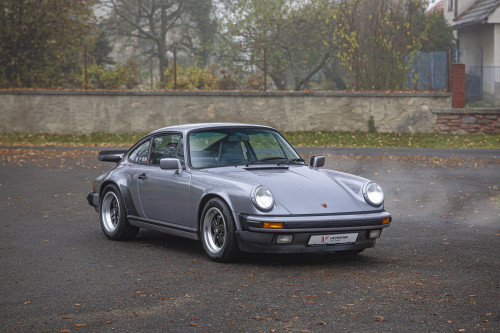During a chance meeting whilst crossing the Atlantic on the Queen Elizabeth, Englishman Donald Healey and Nash-Kelvinator chief George Mason discussed the prospect of collaborating on a sports car. The duo came to an agreement, and batches of Nash Ambassador six-cylinder engines and three-speed gearboxes with overdrive were shipped to Warwickshire, England. There, they were mated with a Healey Silverstone chassis and a Panelcraft body of Healey design. Production began for the 1951 model year in December 1950. Racing versions finished 9th in class in the Mille Miglia and 4th overall at Le Mans, but the steep $4,063 price for Nash’s halo car kept sales to just 104 units that first year.
Mason never cared for the original slab styling of the car, so he contracted Italy’s Battista “Pinin” Farina to style the senior Nashes for 1952, as well as to update the Nash-Healey. Steel bodywork replaced aluminium. The price jumped to $5,858, and a total of just 150 were produced. And only a few of the early Pininfarina cars were equipped with the same 3.8L engine that powered the 1951 models, but a 125-hp, 4.1L quickly replaced the smaller six-cylinder (starting with S/N N-2251).
A total of 506 examples of this Sports model were produced. Specifically, the Le Mans model produced 250 pieces, of which 150 were roadsters and 100 were coupes. Production took place in several places. First, an engine was built in Kenosha, Wisconsin, which was transported to Warwickshire, UK, where it was mounted and the frame fitted with axles. The car was then moved to a body shop located in Turin, Italy, where the car was assembled and transported back to the United States, as the car was destined for the American market.
The history of the car also includes competitive achievements such as 9th place in its class in the Mille Miglia competition or in 1952 the car won in his category (3001 - 5000cc) and overall placed third.
This unusual, highly original Nash-Healey was previously owned by a respected enthusiast in Midwestern United States. Previously, it was found resting in a warehouse in Holland for the better part of 25 years. It is a matching-numbers car with its original engine. Although it is believed that the car has been repainted many years ago, it is likely all-original, and it is virtually intact, including its top and side curtains. Period advertising materials are also included with the sale of this Nash-Healey. The car is running; although, after long-term storage, further re-commissioning is recommended prior to making the car roadworthy. With today’s interest in original cars and barn-find examples, this is an outstanding and uncommon opportunity to purchase an iconic and rare Nash-Healey convertible.
This example won the Post-war Award at Chateau Loucen Concours d'Elegance in 2015.
| Production date | 1952 |
|---|---|
| Body Type | Roadster |
| Engine | 3.848 ccm, 127 PS, I6 |
| transmission | Manual |
| Steering | Left Hand Drive |
|---|---|
| Layout | Rear Wheel Drive |
| Color - exterior | Silver |
| Color - interior | Red |
| Miles/Kilometers shown | 40.964 mls |
|---|---|
| Chassis / VIN | 2240 |
| Location - Country | Czech Rep. |
| Location - City | Prague |
manufactured by Nash-Healey in United States assembly in UK (The Cape, Warwick) by Healey (chassis) and in Italy (Turin) by Pininfarina (body); 2-door roadster body type; RWD (rear- wheel drive), manual 4-speed gearbox; gasoline (petrol) engine with displacement: 3849 cm3, advertised power: 93.2 kW / 125 hp / 127 PS ( SAE ), torque: 285 Nm; characteristic dimensions: outside length: 4337 mm, width: 1626 mm, wheelbase: 2591 mm; reference weights: shipping weight 1247 kg; top speed: 172 km/h (107 mph); accelerations: 0-60 mph 11.4 s; 0-100 km/h 12.2 s

Písek, Czechia

Jablonec nad Nisou, Czechia

Jablonec nad Nisou, Czechia

Písek, CZ

Písek, CZ

Písek, CZ